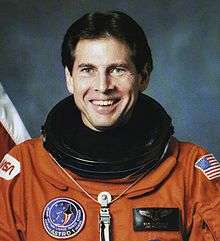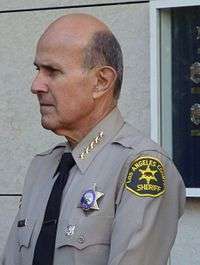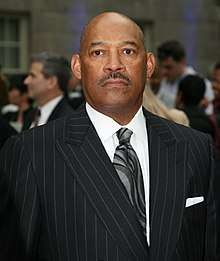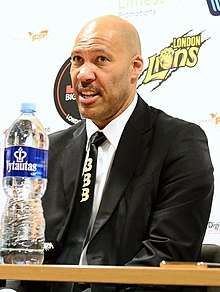California State University, Los Angeles
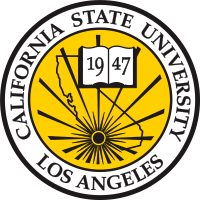 | |
Former names |
Los Angeles State College of Applied Arts and Sciences (1947–64) California State College at Los Angeles (1964–72) |
|---|---|
| Motto | Vox Veritas Vita (Latin) |
Motto in English | "Voice Truth Life" – Speak the truth as a way of life. |
| Type | Public land-grant |
| Established | 1947[1] |
| Endowment | $38.8 million (2017)[2] |
| President | William A. Covino[3][4] |
| Provost | Lynn Mahoney[5] |
Academic staff | 1,031 |
| Students | 27,827 (fall 2016)[6] |
| Undergraduates | 24,059 (fall 2016)[6] |
| Postgraduates | 3,768 (fall 2016)[6] |
| Location | University Hills, Los Angeles, California, United States |
| Campus | Urban, 175 acres (71 ha) |
| Colors | Black & gold |
| Athletics | NCAA Division II – CCAA |
| Nickname | Golden Eagles |
| Affiliations | California State University system |
| Website |
www |
|
| |
California State University, Los Angeles (Cal State LA) is a public comprehensive university in the heart of Los Angeles, one of the 23 universities in the California State University (CSU) system. Cal State LA is located in the eastern region of Los Angeles, California, United States, in the University Hills district, facing the San Gabriel Mountains, at the center of Los Angeles metropolitan area just five miles (8 km) east of Downtown Los Angeles.
Cal State LA offers 129 bachelor's degrees, 112 master's degrees, and three doctoral degrees: a Ph.D. in special education, Doctor of Education (Ed.D), Doctor of Nursing Practice (DNP). It also offers 22 teaching credentials.[7][8] Cal State LA is a Hispanic-serving institution.
Overview and main campus
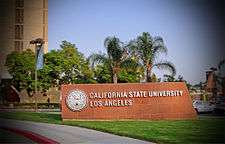
Cal State LA has a student body of more than 24,000 students primarily from the greater Los Angeles area,[9] as well as 240,000 alumni. Cal State LA operates on the semester system with two semesters, each 15 weeks in duration per year: in the fall of 2016, the university changed to the semester system as part of a system-wide conversion of all quarter campuses.[10] Cal State LA is organized into eight colleges that house a total of four schools and approximately 50 academic departments, divisions and interdisciplinary programs offering a variety of majors.[11] Cal State LA is home to the critically acclaimed Luckman Jazz-Orchestra and a unique Early Entrance Program in the Honors College for gifted students as young as 11.[12]
The 175-acre (71 ha) hilltop campus core is home to the nation's first Charter College of Education, a NASA-funded SPACE program, Rockefeller-supported humanities center, a National Science Foundation funded environmental research center and other award-winning engineering programs. U.S. News has ranked Cal State LA's undergraduate business program as one of the best in the nation. The School of Nursing is considered to be one of the best in the state of California.
The Charter College of Education has awarded more teaching credentials in the state of California than any other public institution, and includes an innovative baccalaureate degree program in Urban Learning designed to train teachers for the specific demands of urban schools. The university also has the nation's largest early/pre-teen collegiate program, and one of the few and the longest-operating graduate Criminal Justice and Criminalistics program west of the Mississippi river. The Television, Film, and Media Studies program is one of the foremost film schools in the CSU system, coordinating film and TV production experiences with the neighboring Hollywood film industry by the Cal State LA Studios.
It is also home to two high schools the Marc and Eva Stern Math and Science School and the Los Angeles County High School for the Arts (LACHSA), a prestigious arts high school, notable for being the only arts high school in Los Angeles that allows for students from any district within Los Angeles County to attend. Classrooms are shared with Cal State LA, however, LACHSA activities tend to be separate from those of the university. Notable LACHSA alumni include singer Josh Groban, actress Jenna Elfman,[13] actor/singer Corbin Bleu, and UCLA Athletics senior executive Ron "Country Club" Kobata.
Downtown Los Angeles campus
Cal State LA opened a new downtown Los Angeles campus in 2016 to provide university programs.
The university has signed a lease for 21,000 square feet at West 8th Street and South Grand Avenue. The location at the edge of the Financial District is in the midst of a residential development boom, with thousands of apartments under construction or in the pipeline, including a 700-unit apartment building anchored by a Whole Foods supermarket across the street from the Cal State LA site.
Cal State LA will offer undergraduate and graduate programs at the site, as well as professional development and certificate programs.
The campus will contain 12 classrooms, two computer labs, student lounges, student collaboration space, conference and events space, and administrative and faculty offices.
History
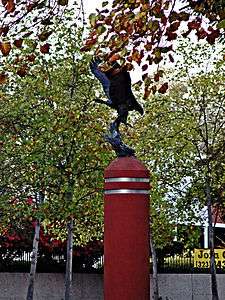
The university is located on the site of one of California's 36 original adobes, built in 1776 by Franciscan missionaries and destroyed by fire in 1908. These lands once were part of a Spanish land grant known as Rancho Rosa Castilla, given to Juan Batista Batz, a Basque rancher from northern Spain who settled here in the 1850s.[14] The inspiration for the name of the rancho, according to local historians, was the wild roses that once grew near the ranch home. The main drive through the campus is known as Paseo Rancho Castilla, in acknowledgment of the university's historic heritage.
Cal State LA was founded on July 2, 1947 by an act of the California legislature and opened for classes as "The Los Angeles State College" (LASC) on the campus of Los Angeles City College (LACC). In 1949, the Los Angeles State College was reconstituted by the Legislature as "The Los Angeles State College of Applied Arts and Sciences." In 1964, the Board of Trustees of the California State Colleges changed the name of the college to the "California State College at Los Angeles," and in 1968 to "California State College, Los Angeles," when it became part of the California State College (CSC) system. In 1972, CSCLA was awarded university status and was renamed California State University, Los Angeles.[15]
From 1947 to 1955, the college shared the campus of the Los Angeles City College but the shared-campus experiment proved to be unwieldy and the college moved to its present campus of 175 acres (71 ha) in the northeastern section of the City of Los Angeles, 5 miles (8 km) east of the Civic Center.[16]
In 1952 the state proposed a new satellite campus for Cal State LA, at the time known as Los Angeles State College, and in July 1958, the campus separated from Cal State LA and was renamed San Fernando Valley State College (now known as California State University, Northridge).[17][17]
Since 1954, Cal State LA has been accredited by the Western Association of Schools and Colleges (WASC). The university's credential programs are approved by the Commission for Teacher Credentialing Committee on Accreditation.
In 1968 Cal State LA established the nation's first Chicano Studies department. In 1993, the CSU Chancellor and Trustees approved development of Cal State LA's Charter College of Education, creating the first such college of higher education in the nation.
The original mascot of the school was the Diablo. In 1980, new university president James Rosser adopted a new mascot, Eddie the golden eagle, designed to be more reflective of the campus' highly diverse community. The theme was extended to student facilities such as the student union and bookstore.[18]
In September 2000, California Governor Gray Davis chose the Cal State LA campus to hold press conference at which he signed the historic bills expanding the Cal Grant program.[19]
A Statue of Confucius, a gift of the Republic of China in Taiwan, was dedicated June 1987. The statue was moved to a new campus location in summer 2005. Its home is now on the grassy area, south of the State Playhouse.
Naming of the Rongxiang Xu College of Health and Human Services took place during the University's 69th Commencement on June 11, 2016. The naming recognized the largest gift in the University's history and named in honor of the late Dr. Rongxiang Xu, who was a surgeon and expert in regenerative medicine.
University presidents
| Presidents of Cal State LA | Years as president | |
|---|---|---|
| 1 | P. Victor Peterson | 1947–49 |
| 2 | Howard S. McDonald | 1949–62 |
| 3 | Albert D. Graves | 1962–63 |
| 4 | Franklyn A. Johnson | 1963–65 |
| 5 | John A. Greenlee | 1965–79 |
| 6 | James M. Rosser | 1979–2013 |
| 7 | William A. Covino[20] | 2013– |
Campus life and cost of university
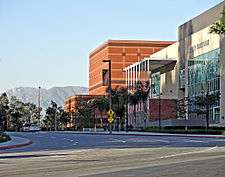
| Undergraduate | |
|---|---|
| American Indian or Alaskan Native | 0.1% |
| Asian | 16% |
| Black (non-Hispanic) | 4.2% |
| White | 7.6% |
| Hispanic and Latino Americans | 60.9% |
| Two or more races non Hispanic/Latino | 1.7% |
| Nonresident Alien | 5.6% |
| Race and/or Ethnicity unknown | 3.8% |
As of the fall of 2016, Cal State LA switched over from the quarter to the semester system. Tuition and fees for in-state is $6,613 and $18,513 for out-of-state as of the 2017-18 academic year with a student/faculty ratio of 23:1. Classes are scheduled Monday through Saturday from 7 am until 10 pm.
Near the edge of the city of Los Angeles, adjacent to the western San Gabriel Valley cities of Alhambra and Monterey Park, the campus affords views of the mountains to the north, the San Gabriel Valley to the east, metropolitan Los Angeles to the west, and the Palos Verdes Peninsula and Catalina Island to the south.
The Harriet and Charles Luckman Fine Arts Complex, the campus' northern gateway, was dedicated in 1994. An architectural tour-de-force, the buildings house a 1,152-seat theater, art gallery and the black box Intimate Theatre, completed in 2004.
Construction on a $30 million University-Student Union (U-SU) building has recently been completed. The facility offers a place for students and faculty to congregate and interact before or after class. It replaces the 1975 U-SU building that was closed down in 2004, due to seismic concerns. The U-SU, with a theatre, a fitness center, and an array of other services dedicated to the student body. Its meeting rooms connect to those of The Golden Eagle via a third floor bridge. The Golden Eagle includes a food court, a Barnes & Noble operated bookstore and major conference facilities. The university food court is owned by Pepsi-Co, offering a selection of fast food chain restaurants that include El Pollo Loco, Carl's Jr., Rice Garden, Juice It Up, and Kikka Sushi. The U-SU facility houses additional selection of fast food that includes Sbarro and Starbucks. Various places inside the campus also serve food and coffee.
Cal State LA is one of only eight institutions in North and South America selected as a Rockefeller Foundation humanities fellowship residency site.[22]
The HBO show Silicon Valley used the face of the U-SU as the building for the Hooli company.
Campus services
California State University, Los Angeles offers a number of student services including nonremedial tutoring, a women's center, a job placement service, a day care, health services, and health insurance. Cal State LA also offers campus safety and police services like 24-hour foot and vehicle patrols, late night transport/escort service, 24-hour emergency telephones, lighted pathways/sidewalks, and student patrols.
Students, faculty, and staff can get a wireless connection to the Internet by interconnected Wi-Fi hot spots throughout the campus. On September 18, 2014, Information Technology Services launched the new Gigabit Wi-Fi network, 802.11ac, the very latest standard in wireless technology. In addition to replacing 550 existing access points, 109 new access points were installed. Another 100 new access points were installed at the end of the fall 2014 quarter to further enhance both network coverage and capacity.[23]
Associated Students
Associated Students Incorporated (ASI) is the student government of California State University, Los Angeles. ASI is governed by a student board of directors who is elected each year by the student body of Cal State LA ASI represents the interest of the student body and act as the officially recognized voice of the students. In addition, ASI sponsors a number of campus events and activities using mandatory student fees.[24]
Eagle Advocates a.k.a. Lobby Corps
Eagle Advocates, or ASI's Lobby Corps, is the sole student advocacy group representing the entire student body of the school. Each CSU campus has a lobby corps and is open to all students. Students are trained in advocacy and lobbying throughout the school year. A focus is aimed at the state legislature although local and federal issues are followed as well.[25]
Student housing
From 1964 to 1972, developer Louis Lesser built six off-campus, 10-story high-rise residential halls to house 3,600 students. The 175-acre (71 ha) campus lacked space for horizontal expansion, following the California State University expansion plan started in 1959. This doubled the university's housing capacity, making Cal State LA the largest in the California State University system. Maxwell Starkman & Associates, AIA, of Beverly Hills, designed the development plan. Unlike other components of the Cal State University system being developed in the 1960s, the residence halls were privately financed by Louis Lesser Enterprises, Inc. The first on-campus housing was opened in June 1984, and three years later, a second residential life complex was opened. Cal State LA has a student-housing complex where students can rent a house at double occupancy for $655.00 per month (as of November 2009). During 1984 Summer Olympics that took place in Los Angeles, Cal State LA student houses were upgraded and expanded because it housed the athletics of the 1984 Summer Olympics.[26][27]
Lesser also pioneered underground parking, with his Cal State LA development, at the time considered unusual enough to merit a separate newspaper section header, "Parking Underground", which described a two-level underground parking lot as a "concept" of "subterranean spaces".[27][28]
A newly debuted Halisi Scholars Black Living-Learning Community is an effort to "enhance the residential experience for students who are a part of or interested in issues of concern to the black community living on campus by offering the opportunity to connect with faculty and peers, and engage in programs that focus on academic success, cultural awareness, and civic engagement."[29]
Parking and public transportation

Cal State LA's parking received press coverage for pioneering the concept of underground parking to deal with the limitations of ground space for expansion under the initial California State expansion plans of the early 1960s. Developer Louis Lesser developed "underground parking” in his off campus residential housing development for the university in 1964, with only a two level underground parking structure considered so unusual as to merit a separate newspaper section header, "Parking Underground", and calling the parking “subterranean spaces."[27]
The school is home to the first commuter train station on a college campus, the Cal State LA station on Metrolink's San Bernardino Line, which opened in October 1994. The school is also accessible from the California State University, Los Angeles station on the El Monte Busway; both stations are located at the south end of the campus. Metro Local lines 665, 71, and 256, as well as neighborhood shuttles serve the school.
Construction is completed on a hydrogen fueling station on campus. The station will operate as a teaching resource for classes on alternative energy and fuel systems, as well as a public accommodation selling and dispensing hydrogen to those driving fuel cell vehicles. Cal State LA is one of only three organizations in the state to be awarded CARB funding for such a facility.[30]
Academics
| 2016 | 2015 | 2013 | 2012 | 2011 | ||
|---|---|---|---|---|---|---|
| Freshman applicants | 35,429 | 31,855 | 28,506 | 27,321 | 24,218 | |
| Admits | 22,567 | 21,704 | 17,456 | 18,448 | 16,812 | |
| % admitted | 63.6 | 68.1 | 61.2 | 67.5 | 69.4 | |
| GPA | 3.18 | 3.14 | 3.11 | |||
| SAT composite | 880 | 880 | ||||
| *SAT out of 1600 | ||||||
The Charter College of Education's Division of Special Education and Counseling has a joint PhD program in Special Education with University of California, Los Angeles, and an independent Ed.D. program in Educational Administration as part of the Division of Applied and Advanced Studies in Education.
Cal State LA's School of Nursing launched the Doctor of Nursing Practice (DNP) in the fall of 2012. The DNP has been accredited by the Western Association of Schools and Colleges (WASC).
The College of Business and Economics offers 3 degrees: a BS in Business Administration, a BS in computer Information System, and a BA in Economics with 17 options and 6 minors.
Cal State LA's College of Engineering, Computer Science, and Technology is divided into five departments: the Departments of Civil Engineering, Computer Science, Electrical and Computer Engineering, Mechanical Engineering, and Technology. Collectively, these departments offer 12 undergraduate programs, four graduate programs and two teaching credentials in collaboration with the Charter College of Education.
In July 2000 the university's Model United Nations (NMUN) chapter placed in the top 30 out of 190 teams in the New York City competition, bringing home its first national conference win since the chapter's inception more than 30 years previous. The Cal State LA student delegation garnered top awards in all categories at the 2009 annual National Model United Nations. In 2010 The student team received both "Outstanding Delegation" and “Outstanding Position Papers”, the highest honors a delegation can receive.[22]
Having established the nation's first Chicano Studies Department in 1968, today Cal State LA is a top source of bachelor's and master's degrees for Hispanic students in California.[22]
The College of Engineering began an undergraduate minor in biomedical engineering in the fall of 2016.
Cal State LA's academic departments and programs are organized into eight colleges:
- College of Arts and Letters
- College of Business and Economics
- The Charter College of Education
- College of Engineering, Computer Science, and Technology
- Rongxiang Xu College of Health and Human Services
- College of Natural and Social Sciences
- College of Professional and Global Education
- Honors College
Faculty
Cal State Los Angeles' faculty include two presidential award-winning professors and 12 faculty members honored with CSU Outstanding Professor Awards, more than any other university in the 23-campus system.
In September 1996 chemistry professor Carlos G. Gutiérrez was among the first honorees named by President Bill Clinton to receive the newly established annual Presidential Award for Excellence in Science, Mathematics and Engineering Mentoring, at a White House ceremony.
In December 1999 Raymond Landis, Dean of Engineering and Technology, was honored by the White House for outstanding student mentoring. The recognition earned the university its second presidential award.
The Fulbright U.S. Scholar Program recognized seven Cal State LA professors over the past two years, giving them the opportunity to research and teach at universities in Qatar, Hong Kong, Japan, Iceland, Togo, and Cyprus. In 2009, the Cal State LA Fulbright contingent was one of the largest in the country, ranked in the top 10 nationally out of the more than 400 universities in the program.
Desert Studies Center
The Desert Studies Center is a field station of the California State University located in Zzyzx, California in the Mojave Desert. The purpose of the Center is to provide opportunities to conduct research, receive instruction and experience the Mojave Desert environment. Is officially operated by the California Desert Studies Consortium, a consortium of 7 CSU campuses: Fullerton, Cal Poly Pomona, Long Beach, San Bernardino, Northridge, Dominguez Hills and Los Angeles.
Rankings
| University rankings | |
|---|---|
| National | |
| Forbes[38] | 373 |
| Regional | |
| U.S. News & World Report[39] | 63 |
| Master's University class | |
| Washington Monthly[40] | 6 |
|
USNWR graduate school rankings[41] | |
|---|---|
| Education | 105 |
| Nursing: Master's | 98 |
|
USNWR departmental rankings[41] | |
|---|---|
| Fine Arts | 55 |
| Public Affairs | 108 |
| Rehabilitation Counseling | 50 |
| Social Work | 68 |
| Speech–Language Pathology | 163 |
Washington Monthly's annual college guide, 2018 College Ranking Guide, names Cal State LA number six in its 150 “Top Master’s Universities” category, which includes institutions that grant graduate degrees.[42] Cal State LA also ranks six in the “Best Bang for the Buck Western Colleges” category. The magazine rates universities based on their contribution to the public good, considering factors that include research, service and social mobility.
In January 2017, Cal State LA was ranked #1 in the country for the upward mobility of students. The Equality of Opportunity Project followed 30 million students enrolled at over 2,200 colleges and universities, from 1999-2013, and concluded that the institution with the highest "mobility rate" was Cal State LA.[43]
In 2016 U.S. News & World Report's “America’s Best Colleges” issue ranked Cal State LA tied for 18th in public regional universities in the Western United States for regional universities whose highest degree is a master's, and 63rd in all regional Master's universities, both public and private, in the West.[44] Cal State LA's College of Engineering, Computer Science, and Technology was ranked 41st of undergraduate engineering schools in the U.S. whose highest degree is a master's,[45] while the rehabilitation counseling program was ranked 50th, the social work program 66th, the nursing graduate program tied for 68th, and the fine arts program 82nd in the nation.[44]
In 2016 Cal State LA was ranked 24th nationally in Washington Monthly's College Guide for top Master's Universities.[46] Washington Monthly assesses the quality of schools based on social mobility (recruiting and graduating low-income students), research (producing cutting-edge scholarship and PhDs), and service (encouraging students to give something back to their country).
In June 2015, Cal State LA was ranked the 32nd top college in the United States by Payscale and CollegeNet's Social Mobility Index college rankings.[47]
In 2014 Cal State LA was listed as one of Time magazine's top 100 colleges and universities, according to new criteria proposed by the White House that is based solely on accessibility, affordability, and graduation rate. Ranked at #24, Cal State LA is one of the seven CSU campuses that made the list.[48]
Engineering and competitions
The college of Engineering, Computer Science, and Technology (ECST) was funded by NASA to advance aerospace technology and space research.[22] Cal State LA's NASA University Research Center is only one of its kind in the state of California. The objective of the program is to design and build a segmented reflector test-bed.
The Solar Eagle
The college has achieved international recognition with its advanced vehicles. Cal State LA's Team Solar Eagle has built three cars that competed in solar car races in the United States and Australia, winning a national championship at the American Solar Challenge in 1997.[49] The 1997 champion Solar Eagle III was the first solar and only Hot Wheels[50] reproduction of a student-built vehicle.[51] The Solar Eagle II is on display at the California Science Center in Los Angeles.
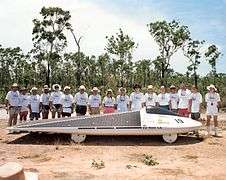 World Solar Challenge
World Solar Challenge
Darwin Australia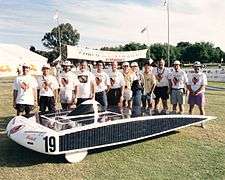 World Solar Challenge
World Solar Challenge
Adelaide, Australia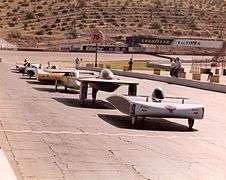
 Solar Eagle III National Champions
Solar Eagle III National Champions
The Super Eagle
The ultra-high gas mileage car ECST Super Eagle won the American Society of Automotive Engineers' (SAE) 2004 mileage competition with a tested fuel consumption of 1,615 miles (2,599 km) per gallon. The faculty team advisor, James Ettaro, was honored by the SAE. The Solar Eagle and Super Eagle are the latest in a long line of solar-powered cars and other super-efficient vehicle technologies.
AVTC competitions
In August 2006 Cal State LA became the first university west of the Mississippi and second overall to achieve successful flight powered by fuel cells. The unmanned aerial vehicle was developed by a team of mechanical engineering students working in Cal State LA's Multidisciplinary Flight dynamics and Control Laboratory (MFDCLab).[52][53]
EcoCar competitions
In April 2011 Cal State LA was chosen to become part of the 3-year AVTC[54] EcoCAR2: Plugging into the Future competition managed by Argonne National Laboratory and sponsored by the US Department of Energy and General Motors. EcoCAR2 tasks 15 universities to modify a Chevrolet Malibu into a plug-in hybrid while maintaining safety and consumer acceptability. The university has chosen a parallel-through-the-road architecture as part of the competition.[55] The competition is a collaboration between the College of Engineering, Computer Science, and Technology and the College of Business and Economics, with Engineering handling the design and implementation of the vehicle systems and the Business handling budgeting, fundraising and promotion of the program.
In May 2013 Cal State LA's EcoCAR 2 team came home 2nd place overall in Year Two of the EcoCAR 2: Plugging In to the Future collegiate engineering competition.
Continuing their participation in AVTCs, CSULA is involved with General Motors' new competition series called EcoCAR3. This is a four-year competition where 16 universities across northern America were donated a 2016 Chevy Camaro and are focused on converting this traditional fossil fuel vehicle into a plug-in hybrid electric vehicle. CSULA's team has focused on developing a post-transmission parallel architecture for their vehicle. Additionally, the team has decided to deviate from the standard expectation of marketing their developed vehicle to consumers and is instead targeting law enforcement fleets as a business to business focus.[56] The EcoCar3 team will have four years (2014–18) to redesign and re-engineer a Chevy Camaro in an effort to reduce the energy consumption and greenhouse emissions of the vehicle, while maintaining consumer acceptability, performance, utility and safety. At the end of the four years, the student-built vehicles will participate in an over-the-road event, raising the stakes for vehicle, dependability and safety.[57]
Programs
Early Entrance Program
The Early Entrance Program (EEP) is an early college entrance program for gifted individuals of middle school and high school ages. The unique educational program is specifically designed to permit young, highly gifted students to enroll in college as full-time students. The Early Entrance Program was established at California State University, Los Angeles in 1982. The Program allows qualified students as young as 11 years of age the opportunity to excel at the university level. The program maintains a population of approximately 150 full-time highly gifted teen-aged students known as "EEPsters." Every year, approximately 100 academically gifted students from all over the United States apply to EEP, with around 30 applicants admitted. Students must achieve a combined verbal and mathematics score of 1100 on the SAT, with neither score falling below 550; or at least a 24 in English and a 23 in mathematics on the ACT.[12] After a preliminary interview with the EEP director, prospective students must also undergo a rigorous assessment period called a Provisional Quarter (or "Provie Summer") before final admission.
Forensic sciences
Cal State LA's growing forensic science program has been a part of the university curriculum since the founding of the school. It is home to one of the few and the longest-operating graduate Criminal Justice and Criminalistics program west of the Mississippi river,[58] located in the new Los Angeles Regional Crime Lab. The new Hertzberg-Davis Forensic Science Center, which was dedicated on May 11, 2007, jointly house the LAPD's Scientific Investigation Division, the L.A. County Sheriff's Department Scientific Services Bureau and Cal State LA Criminal Justice and Criminalistics programs.[59][60]
Sea floor engineering
Cal State LA also has a comprehensive seafloor-engineering program.[61] Research is conducted at the Naval Facilities Engineering Service Center in Port Hueneme, California.[62] In 2003, Civil engineering professor Mark Tufenkjian led Cal State LA to receive over half a million dollars in grant money. The award of $594,253 is the largest grant ever received by Cal State LA's Department of Civil Engineering.[63]
Cal State LA bottled water
The Cal State LA Eagle spring water, sold on campus, is the result of a partnership between the university's administration and the College of Business and Economics. Together the two branches of the university worked together to develop a product that would appeal to student body and still be affordable. The college has developed "experiential" learning projects, which students participate in during their final years of schooling. The university's water bottle project is one such opportunity, recognizing that there is only so much they can teach students out of a book.[64][65]
Campus media
University Times
The University Times (UT) is a student-run newspaper. The first student newspaper, at that time called The College Times, was published in June 1948 for the first time. In 1965 The College Times was named the best newspaper by California Intercollegiate Press. On October 2, 1972 The College Times changed its name to University Times, in accordance with the change in university status. The name was the popular result of a campus-wide poll, with "Devil's Advocate" coming in second. Larry Hawthorne was the first editor-in-chief of the University Times.
Golden Eagle Radio
This webcast station started in 2015.
Golden Eagle Productions
Golden Eagle Productions (also known as GEP) is Cal State LA's primary film and television unit, composed of students creating and producing media content such as news and digital pieces, as well as original films and series.
Greek life
Excluding the Greek Council and Order of Omega, as of the winter of 2013, the Cal State LA Campus is home to 19 "social" fraternal organizations, seven fraternities (two new colonies), nine sororities, and two co-ed fraternities. Within that population there are three National Panhellenic Conference sororities, two IFC fraternities, two National Pan-Hellenic Conference fraternities, one statewide Latino fraternity, one international Latino fraternity, one Armenian fraternity, two NALFO sororities, two NPHC sororities (with a third trying to charter) and three local sororities.
There are 4 representative governing bodies of the Greek community at Cal State LA; the Interfraternity Council, National Pan-Hellenic Council, Multi-Cultural Greek Council, and the Panhellenic Council. These governing bodies are advised by the university through the Center for Student Involvement—a division of Cal State LA's University-Student Union. This division is under the auspices of both the University-Student Union and the Department of Student of Affairs. It has grown into a vast social network of collegiate men and women composed of chapters that are local, statewide, national, and international.
Cal State LA's Greek System began with the establishment of the Alpha Theta Pi (ΑΘΠ) sorority on November 15, 1948.
Zeta Beta Tau (ΖΒΤ), Phi Sigma Kappa (ΦΣΚ), Sigma Nu (ΣΝ), and Sigma Alpha Epsilon (ΣΑΕ) are internationally recognized social fraternities at the university. They function underneath the Inter-fraternity Council at the university and are members of the North-American Interfraternity Conference.
Alpha Sigma Tau (ΑΣΤ), Delta Zeta (ΔΖ), and Delta Phi Epsilon (ΔΦΕ) are part of the Panhellenic Council at the university and are members of the National Panhellenic Council, one of the largest organizations advocating for women, and umbrella organization for 26 national and international sororities that are autonomous social organizations.
Cal State LA is host to five Latino Greek-lettered organizations: the largest Latino-based fraternity in the nation, Sigma Lambda Beta (ΣΛΒ), Lambda Theta Nu (ΛΘΝ), Lambda Theta Alpha (ΛΘΑ) and Gamma Zeta Alpha (ΓΖΑ). Each of these organizations are NALFO organizations, or those whose parent organizations are members of the National Association of Latino Fraternal Organizations, with the exception of Sigma Lambda Beta fraternity, which is a member of the North-American Interfraternity Conference. Cal State LA is also home to Beta Gamma Nu (ΒΓΝ), a local fraternity, and Delta Sigma Chi (ΔΣΧ), a co-ed Latino fraternity.
Alpha Phi Alpha (ΑΦΑ) is the only historically Black Greek-letter fraternity on the Cal State LA campus, and is a citywide chapter. Delta Sigma Theta (ΔΣΘ) and Zeta Phi Beta (ΖΦΒ) are the Black Greek sororities on Cal State LA, also known as NPHC sororities. Their parent organizations are members of the National Pan-Hellenic Council.
Athletics
The Golden Eagles are member of the California Collegiate Athletic Association (CCAA) and compete on the Division II level of the National Collegiate Athletic Association (NCAA). Prior to January, 1981, Cal State LA was known as the Diablos; the change to Golden Eagles was made by then-President James Rosser to create a more inclusive, less stereotypical mascot.[57]
The university fields eleven intercollegiate teams for men or women in baseball, basketball, cross country, soccer, tennis, volleyball, indoor track, and outdoor track and field.[66][67] Cal State LA's more than 11 acres (4.5 ha) athletic facility is named the Billie Jean King Sports Complex. The sports complex—which was approved by the CSU Board of Trustees on September 21—features the Eagles Nest Gymnasium, the University Stadium, Jesse Owens Track and Field, Reeder Field (baseball), the swimming pool, and tennis and basketball courts. Development project plans for the complex include a new gym, athletic field and the Rosie Casals / Pancho Gonzales tennis center.[68]
The Los Angeles Football Club (LAFC) selected Cal State LA as the home of its new training facility, soccer operations headquarters, and youth academy.
The LAFC will train on the site at the northern gateway of the Cal State LA campus, though it will play its games in a new stadium in Exposition Park at the Banc of California Stadium. The arrangement was approved by the California State University Board of Trustees.[69]
| Women's sports | Men's sports |
|---|---|
| Basketball | Baseball |
| Soccer | Basketball |
| Tennis | Soccer |
| Volleyball | Track and field (outdoor) |
| Cross-country | Cross-country |
| Track and field (indoor) | |
| Track and field (outdoor) |
Symbols
University Seal
The University Seal has as its motif the outline of the State of California, with a sunburst indicating the location of the university within the city of Los Angeles. The open book symbolizes the educational purpose of the university, with the numerals indicating the date of founding. The original design for the seal, created by John R. Siebon, was accepted by the Associated Students as their official emblem in November 1949, and was adopted officially by the president of the university and the Executive Council in April 1953.
University Mace
The University Mace is a ceremonial piece symbolizing the authority under which the university is chartered. It is identified with the Office of the President and is carried in academic processions for commencements and other official university gatherings. The honor of serving as mace-bearer is accorded to the Chair of the Academic Senate.
The University Mace, first used at the annual commencement exercises in June 1960, was designed and executed by Hudson Roysher, emeritus professor of art. The head of the mace bears the seal of the university. The crowning ornament on the head depicts three buds of the bird of paradise, official flower of the City of Los Angeles. The buds represent the arts, letters, and sciences. The design at the foot of the mace is derived from the poppy, floral emblem of the State of California. The decorative bands encircling the mace symbolize the mountainous terrain of Southern California.
University primary logo
The Cal State LA logo was developed to reflect the strengths of the university and its advantageous location in the City of Los Angeles. Nicknamed the “Hero Logo”, this mark is intended for use in communications and publications that represent the university as a whole, including but not limited to events, brochures, powerpoints, presentations, email blasts, notepads and more.[70]
Future developments
LA BioSpace
LA BioSpace at Cal State LA will give bioscience startup companies the springboard they need to succeed. Created by grants from Los Angeles County and the U.S. Economic Development Administration, LA BioSpace is a university incubator in the heart of Los Angeles.
Scheduled to open in 2018, the LA BioSpace incubator will equip entrepreneurs to turn scientific advances into job-creating businesses.
LA BioSpace is part of a larger grant project based out of Cal State LA, LABioStart. This project hosts networking events and runs a Bioscience Entrepreneur Boot camp in addition to this incubator.[71]
Faculty housing
The university has begun the planning phase of a four-story faculty/staff housing project that will consist of 18 two- or three-bedroom units on the west side of Paseo Rancho Castilla across from the Welcome Center.
There are four types of housing available: homestay, apartment, extended-stay hotel, or at the dormitory on campus. The International Office helps students find housing.
Notable alumni
Notable professors
See also
- Ernest E. Debs, Assembly member who sponsored bill establishing the university
- Hispanic Serving Institution
References
- ↑ "cslainf1.php". calstatela.edu. October 22, 2013.
- ↑ As of June 30, 2017. "U.S. and Canadian Institutions Listed by Fiscal Year (FY) 2017 Endowment Market Value and Change in Endowment Market Value from FY 2016 to FY 2017" (PDF). National Association of College and University Business Officers and Commonfund Institute. 2017.
- ↑ CSULA President Biography Archived July 3, 2009, at the Wayback Machine.
- ↑ "Office of the President". calstatela.edu. September 26, 2013.
- ↑ "About the Provost | California State University, Los Angeles". Calstatela.edu. 2015-06-18. Retrieved 2015-06-18.
- 1 2 3 "Total Enrollment by Sex and Student Level, Fall 2016". The California State University. Retrieved March 11, 2017.
- ↑ "Search CSU Degrees". Degrees.calstate.edu. Retrieved 2014-08-18.
- ↑ "Archived copy" (PDF). Archived from the original (PDF) on April 24, 2015. Retrieved March 1, 2015.
- ↑ "Prospective Students". Calstatela.edu. Archived from the original on July 21, 2013. Retrieved July 17, 2013.
- ↑ "Semester Conversion - California State University, Los Angeles". Web.calstatela.edu. Retrieved 2014-08-18.
- ↑ Degrees, Credentials, program, colleges Cal State L.A. Archived June 13, 2006, at the Wayback Machine.
- 1 2 "Early Entrance Program". California State University website. CSULA. Retrieved November 13, 2011.
- ↑ "lachsa.org - This website is for sale! - lach sa Resources and Information". www.lachsa.org.
- ↑ "History of Cal State L.A". Calstatela.edu. Retrieved 2013-07-17.
- ↑ "Chapter 1". calstatela.edu.
- ↑ "Campus News - Latest News". Los Angeles City College.
- 1 2 "CSUN History". Csun.edu. Retrieved 2013-07-17.
- ↑ 2009 Golden Eagle mascot gets a make-over Retrieved on September 10, 2009
- ↑ Retrieved on December 25, 2011
- ↑ Rivera, Carla (May 22, 2013). "Cal State trustees appoint new Cal State L.A president, others". Los Angeles Times. Retrieved May 22, 2013.
- 1 2 http://ir.calstatela.edu/ir/CommonDataSet/CDS1314.pdf
- 1 2 3 4 http://www.calstate.edu/impact/campus/la.html Cal State L.A's economic impact report
- ↑ "Wireless Network Access". calstatela.edu. October 22, 2013.
- ↑ "About A.S.I. | Associated Students Inc". Asicsula.org. Retrieved 2015-10-19.
- ↑ "A.S.I. Lobby Corps | Associated Students Inc". Asicsula.org. Retrieved 2015-10-19.
- ↑ Los Angeles Times, June 25, 1963, “High Rise Developer Defends Loss of View to Convenience”
- 1 2 3 Los Angeles Times, March 15, 1964, Tom Cameron, “$118 Million Going into Expansion at L.A. State”
- ↑ Housing Archived November 27, 2006, at the Wayback Machine.
- ↑ "Halisi Scholars Black Living-Learning Community". calstatela.edu. September 24, 2016.
- ↑ "Hydrogen Fueling Operation". calstatela.edu. September 26, 2013.
- ↑ "A web page that points a browser to a different page after 2 seconds". ir.calstatela.edu.
- ↑ "CSUMentor - Explore Campuses - Campus Facts - CSU Los Angeles". Csumentor.edu. 2013-01-15. Retrieved 2013-07-17.
- ↑ "Archived copy". Archived from the original on April 30, 2014. Retrieved December 30, 2012.
- 1 2 "News" (PDF). www.calstate.edu.
- ↑ "CSU APPLICATIONS AND ADMISSIONS REPORTS, FALL 2012". Calstate.edu. 2013-05-14. Retrieved 2013-07-17.
- ↑ "CSU APPLICATIONS AND ADMISSIONS REPORTS, FALL 2012". Calstate.edu. 2013-05-14. Retrieved 2017-08-30.
- ↑ "CSU APPLICATIONS AND ADMISSIONS REPORTS, FALL 2012". Calstate.edu. 2013-05-14. Retrieved 2017-08-30.
- ↑ "America's Top Colleges". Forbes. July 5, 2016.
- ↑ "Best Colleges 2017: Regional Universities Rankings". U.S. News & World Report. September 12, 2016.
- ↑ "2016 Rankings - National Universities - Masters". Washington Monthly. Retrieved September 6, 2016.
- 1 2 "California State University–Los Angeles - U.S. News Best Grad School Rankings". U.S. News & World Report. Retrieved 31 March 2018.
- ↑ Cal State LA ranked among nation’s top universities by Washington Monthly , CSULA September 09, 2018
- ↑ Which California colleges help transform impoverished students into wealthy adults? , Sacramento Bee, January 24, 2017
- 1 2 "California State University, Los Angeles - All Rankings". U.S. News & World Report. Retrieved 2016-02-24.
- ↑ "Cal State L.A.'s engineering program ranked among nation's best in U.S. News". Cal State L.A. Office of Communications and Public Affairs. Retrieved 2015-01-14.
- ↑ "2016 Rankings - National Universities - Masters". Washington Monthly. Retrieved 2016-10-14.
- ↑ "Social Mobility Index". Social Mobility Index. CollegeNet and PayScale. 2014. Retrieved June 5, 2015.
- ↑ Wilson, Chris (2014-04-23). "Obama Thinks He Can Rate Colleges. Can You Do Better? (Interactive)". Time.
- ↑ Archived June 17, 2008, at the Wayback Machine.
- ↑ "Archived copy". Archived from the original on July 24, 2008. Retrieved April 24, 2008.
- ↑ "2009–2010 Factoids". calstatela.edu.
- ↑ "MFDC lab". Calstatela.edu. Retrieved 2013-07-17.
- ↑ "Flight Test Success". calstatela.edu. October 22, 2013.
- ↑ "Energy Systems - Argonne National Laboratory". www.transportation.anl.gov.
- ↑ "CSULA EcoCAR2 Team Website". csulaecocar2.com.
- ↑ "CSULA EcoCARE Team Website". csulaecocar3.org.
- 1 2 "History of Cal State L.A." calstatela.edu. October 22, 2013.
- ↑ "CSU Los Angeles - The Impact of the California State University". www.calstate.edu.
- ↑ "School of Criminal Justice and Criminalistics". calstatela.edu. September 26, 2013.
- ↑ Gordon, Larry (2013-07-27). "Cal State L.A. graduate students hone crime scene expertise". Los Angeles Times. Retrieved 2013-07-29.
- ↑ Yee, E. Tufenkjian; M.R. Soto; M. Janer; J. Nevarez, V. "The Naval Seafloor Engineering Research Program at California State University, Los Angeles". OCEANS, 2005. Proceedings of MTS/IEEE. Retrieved 2008-08-27.
- ↑ "The Naval Seafloor Research Program at CSULA". Calstatela.edu. February 1, 2010. Archived from the original on July 4, 2013. Retrieved July 17, 2013.
- ↑ "CSU Newsline - Three Cal State L.A. Students Selected as Office of Naval Research Scholars". Calstate.edu. October 15, 2003. Archived from the original on April 2, 2012. Retrieved July 17, 2013.
- ↑ "Cal State LA Login". www.calstatela.edu.
- ↑ "Golden Eagle Water Bottle | Spotlight". Calstatela.edu. Retrieved 2015-10-19.
- ↑ "Cal State LA". www.csulaathletics.com.
- ↑ Cal State L.A. Athletics – Cal State L.A. Finishes 21st In Nation In Directors Cup Archived September 30, 2007, at the Wayback Machine.
- ↑ "Billie Jean King Sports Complex - Spotlight". calstatela.edu. November 2, 2013.
- ↑ https://lafc.com/lafc-announces-plans-establish-soccer-training-facility-cal-state-la/
- ↑ "Primary Logo | California State University, Los Angeles". Calstatela.edu. Retrieved 2015-10-19.
- ↑ "BioSpace | California State University, Los Angeles". Calstatela.edu. Retrieved 2015-10-19.
External links
| Wikimedia Commons has media related to California State University, Los Angeles. |
Coordinates: 34°04′00″N 118°10′04″W / 34.06667°N 118.16778°W
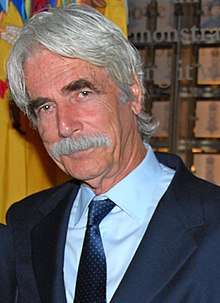
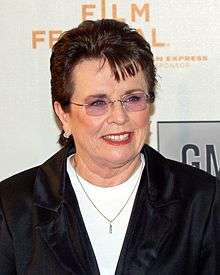
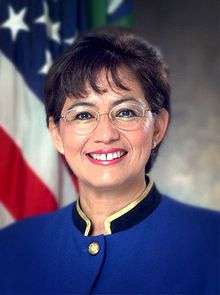
.jpg)
